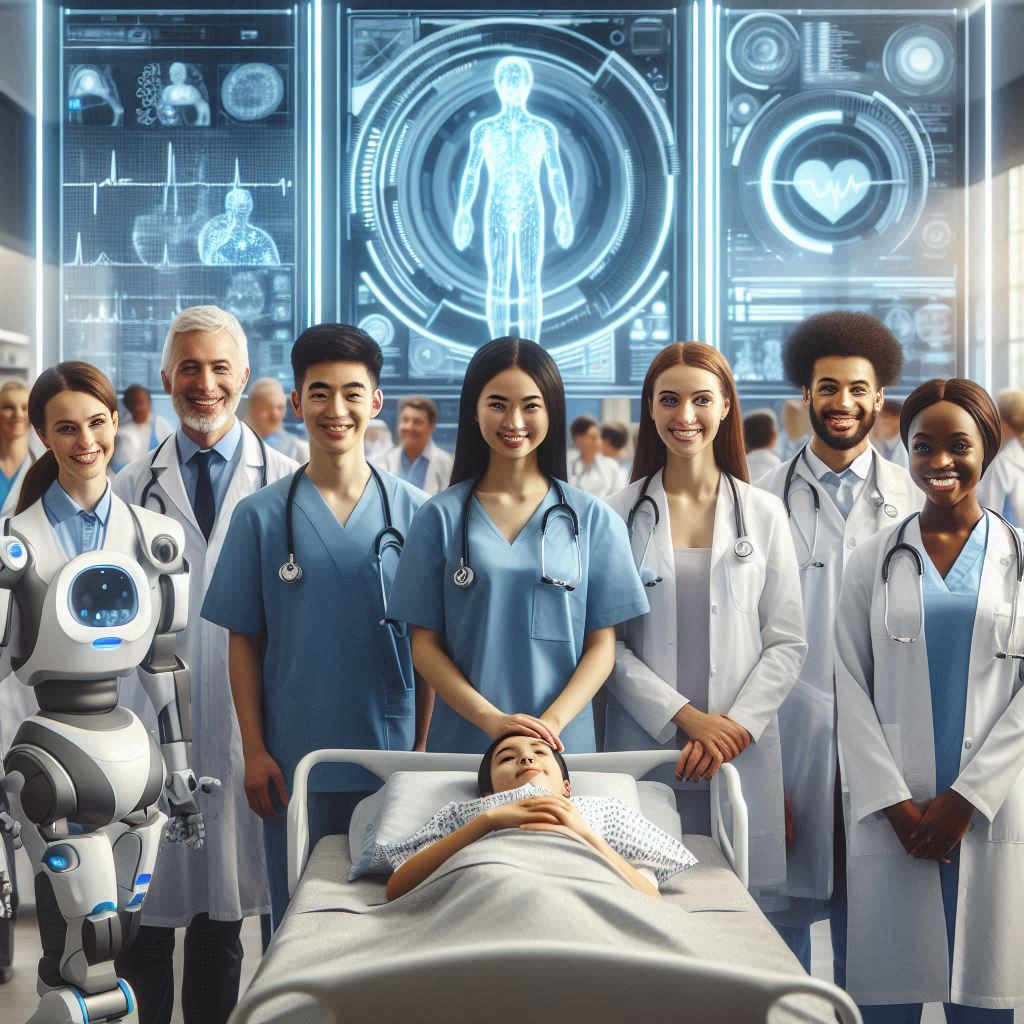The field of healthcare is undergoing a transformative revolution, driven by advancements in robotics. From performing intricate surgeries to aiding in patient rehabilitation, robots are enhancing precision, efficiency, and patient outcomes. In this article, we will delve into how robotics is revolutionizing healthcare and explore its diverse applications across the medical landscape.

The Role of Robotics in Surgery
- Precision and Accuracy: Robotic surgical systems, such as the Da Vinci Surgical System, enable surgeons to perform minimally invasive procedures with unparalleled precision. These robots translate the surgeon’s hand movements into smaller, precise actions, reducing the risk of human error and enhancing surgical outcomes.
- Minimally Invasive Procedures: Robots facilitate minimally invasive surgeries, which involve smaller incisions, reduced blood loss, and shorter recovery times. Patients experience less post-operative pain and quicker returns to normal activities.
- Enhanced Visualization: Robotic systems provide high-definition, 3D visualization of the surgical site, giving surgeons a clearer view of the area being operated on. This improved visualization allows for more accurate and effective surgeries.
Robotics in Rehabilitation
- Physical Therapy Assistance: Rehabilitation robots, such as exoskeletons and robotic arms, assist patients in regaining mobility and strength. These devices provide consistent and controlled movements, helping patients perform exercises and recover faster.
- Personalized Rehabilitation Programs: Robots can be programmed to create personalized rehabilitation plans tailored to each patient’s needs. By monitoring progress and adjusting therapy accordingly, robots ensure optimal recovery outcomes.
- Remote Rehabilitation: Tele-rehabilitation robots enable patients to undergo therapy sessions remotely. These robots, equipped with sensors and communication technologies, allow therapists to guide and monitor patients’ exercises from a distance.
Applications Beyond Surgery and Rehabilitation
- Patient Care and Assistance: Robots are increasingly being used in patient care settings to assist with routine tasks such as medication delivery, patient monitoring, and vital signs measurement. These robots help healthcare professionals focus on more critical aspects of patient care.
- Diagnostics and Imaging: Robotic systems are enhancing diagnostic procedures by providing precise and efficient imaging techniques. Robots can perform tasks such as biopsy sampling and endoscopy with greater accuracy, improving diagnostic outcomes.
- Laboratory Automation: Robots are automating laboratory processes, such as sample handling, testing, and analysis. This automation increases efficiency, reduces human error, and accelerates the delivery of test results.
The Future of Robotics in Healthcare
The future of robotics in healthcare holds immense promise. As technology continues to advance, we can expect to see even more innovative and sophisticated robotic solutions. Here are some potential future developments:
- AI-Driven Robots: Integrating artificial intelligence with robotics will enable robots to learn from data, adapt to new situations, and make autonomous decisions. This will further enhance the capabilities of robots in healthcare.
- Improved Human-Robot Interaction: Future robots will have enhanced communication and social interaction skills, making them more intuitive and user-friendly for both patients and healthcare providers.
- Robotic Integration in Home Healthcare: As the demand for home healthcare increases, robots will play a vital role in assisting patients with daily activities, medication management, and remote monitoring, improving the quality of life for individuals with chronic conditions.
Conclusion
Robotics is revolutionizing healthcare by enhancing surgical precision, improving rehabilitation outcomes, and streamlining patient care. As technology continues to evolve, the potential for robotics to transform the healthcare landscape is boundless. Embracing these innovations will lead to better patient outcomes, increased efficiency, and a brighter future for healthcare.
